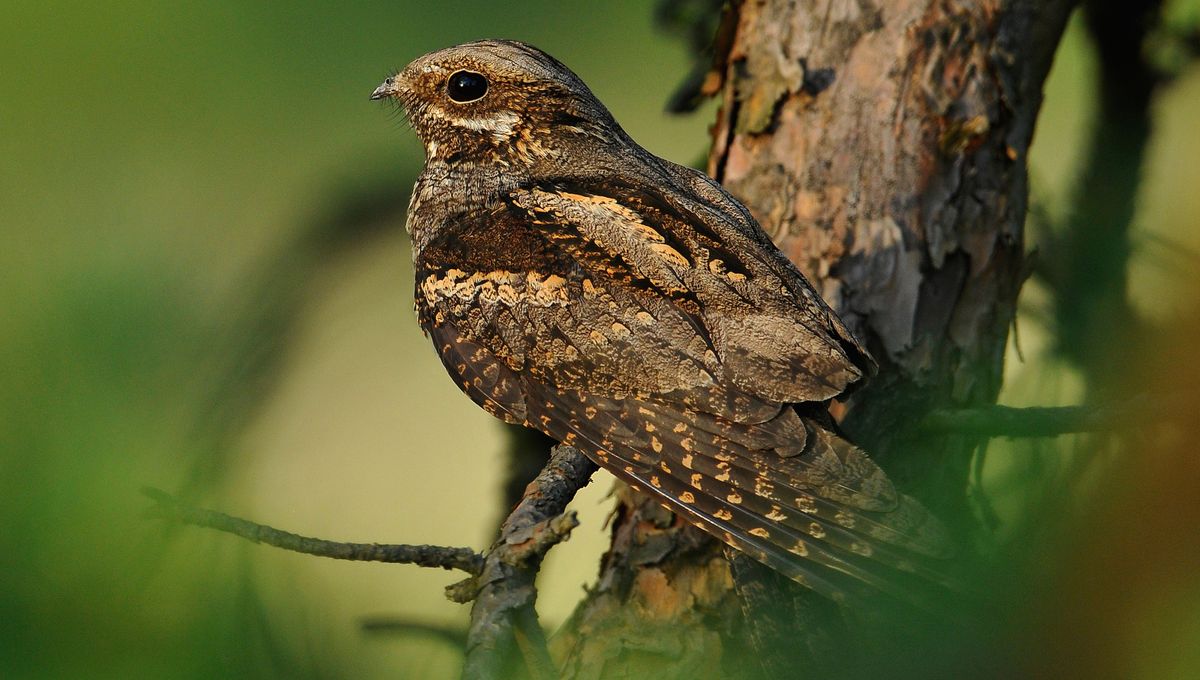
With their large, dark eyes, elusive nature, and unusual sounding calls, it’s no wonder European nightjars (Caprimulgus europaeus) are steeped in folklore. While they’re probably not as supernatural as they seem, there’s still an air of mystery surrounding them – so what do we actually know about the nightjar?
Masters of camouflage
We would argue that they’re quite pretty, but there’s no denying that nightjars are at least a bit odd-looking. Though often compared to kestrels in terms of shape, their tiny beaks and wide mouths look somewhat out of proportion with the rest of them.
Nightjars are, however, masters of camouflage. Their feathers are a mottled gray-brown that resembles tree bark, allowing them to blend in with their surroundings during the day. Couple that with the fact that they’re nocturnal and have silent flight, and the chances of spotting one become fairly slim.
Seeing is hearing
Though they’re called European nightjars, these birds actually spend most of the year in Africa, primarily in the grasslands of the Democratic Republic of the Congo. Then, in late April and May, they make their way to Europe, where they settle on open land like heaths, moors, and woodland clearings.
Within those regions, the best bet at catching a glimpse of a nightjar first involves using your ears. Get yourself on a heath at dusk, when they start to become active, and you may well hear male nightjars churring. If you think this unique trilling doesn’t sound like it comes from a bird, you’re not the only one; it was once believed the male nightjar’s call was actually the sound of witches hiding in bushes.
Mom of the year
On their arrival in Europe, nightjars get busy. Between late May and August, they usually hatch two broods, each consisting of two eggs. Forgoing a nest, a female nightjar lays their eggs on the ground. Though that might seem a tad risky, the eggs are bark-colored, which helps to camouflage them.
Normally, young nightjars fly the nest around two weeks after they hatch, but something quite unexpected happened to a nightjar chick on the UK TV series Springwatch in June last year.
The program had been following a female nightjar and her recently hatched chicks. During some night vision footage captured the previous evening, it appeared as though the mother bird had returned to her nest to feed the chicks, with her head shown to be bobbing up and down.
But then she turned around and as presenter Chris Packham described: “She’s eating her own chick alive, and she swallows it whole.”
Whilst chowing down on your offspring, known as filial cannibalism, isn’t exactly uncommon in the animal world, this doesn’t seem to be typical behavior for nightjars. As Packham explained to viewers, the program’s team had spoken to experts on the matter and gone through scientific reports, and couldn’t find another example of a female nightjar eating their young.
It’s not the only atypical food source that’s been associated with nightjars either. Their genus name, Caprimulgus, means “goatsucker” in Latin. That’s because some used to think that nightjars drank directly from goats’ udders and stopped them from producing milk. In all likelihood, they were actually just snacking on the insects surrounding the goats.
Justice for the nightjar, we say.
Source Link: Nightjars: Goat-Sucking Supernatural Beings Or Misunderstood Birds?